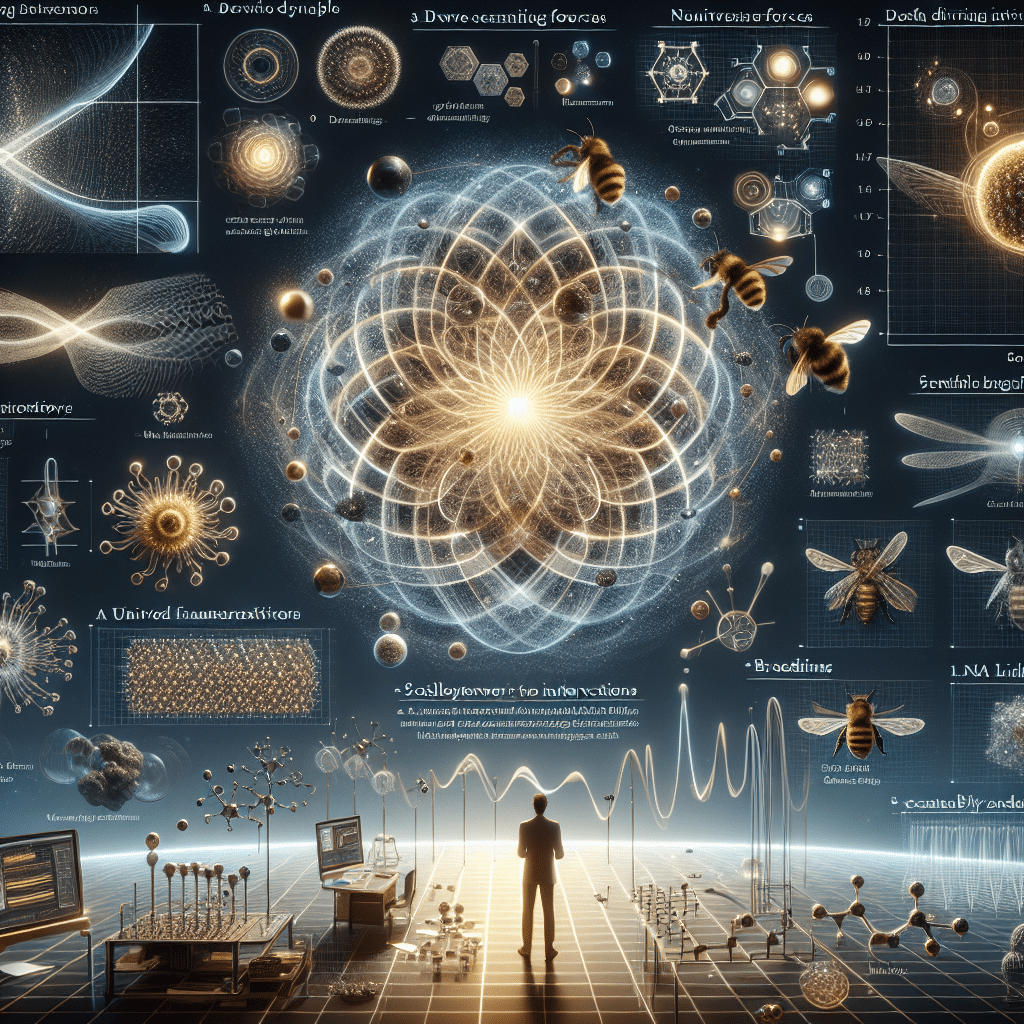String Theory is a bold idea in theoretical physics that tries to explain everything in the universe—from tiny particles like electrons to massive objects like galaxies—using one fundamental concept: vibrating strings. Instead of imagining particles as little points, this theory proposes that every particle is actually a tiny, vibrating string. How it vibrates determines what kind of particle it becomes.
1. What Are These “Strings”?
- Tiny Vibrations
Picture a violin string. Depending on how it vibrates, you hear a different note. String Theory uses a similar idea at an incredibly small scale—far tinier than anything we can currently see. Instead of playing musical notes, these strings create particles like quarks, electrons, and even the forces that hold atoms together. - Different Tones = Different Particles
In the same way a guitar string’s vibration changes the sound, a string’s vibrational pattern determines the particle’s properties—its mass and the forces it can interact with. One pattern might produce an electron; another might produce a photon of light.
2. One Framework to Rule Them All
- Unifying the Forces
Physicists know of four fundamental forces: gravity, electromagnetism, the strong nuclear force, and the weak nuclear force. One major goal of String Theory is to unify these forces under a single theory, showing they all come from the same underlying principle: vibrating strings. - Dimensions Beyond Our Senses
To make the math work, String Theory suggests there are more than the three dimensions we experience in space (plus time). In many versions of the theory, there could be 10, 11, or even more dimensions curled up so small we can’t detect them. These extra dimensions influence the possible vibrational modes of the strings.
3. Why Is It Hard to Prove?
- Teensy-Tiny Scale
The strings are thought to be so unimaginably small that our most advanced experiments can’t observe them. It’s like trying to see the ridges on a grain of sand from outer space. We just don’t have the technology to look that closely yet. - Complex Math
The equations behind String Theory are extremely complicated. While they can elegantly describe certain scenarios, fully solving them (and testing them) is a massive undertaking. - Multiple Versions
There isn’t just one String Theory. There are several related versions, each with different assumptions. Physicists hope to unify these variants into a single “M-Theory” that might be the ultimate description of everything.

4. What Does the Future Hold?
- Bridging Gaps in Physics
String Theory is one of the key contenders in the hunt for a “Theory of Everything.” It aims to bridge the gap between General Relativity (which explains gravity and large-scale cosmic structures) and Quantum Mechanics (which explains the behavior of particles at microscopic scales). - Potential for New Discoveries
Even if String Theory isn’t the final word, the research it inspires pushes the boundaries of mathematics and theoretical physics. Efforts to test aspects of the theory could lead to new experiments, technologies, and ways of thinking about space, time, and matter. - Public Engagement
Part of String Theory’s allure is its ambition—it attempts to describe all known phenomena in the universe in one elegant framework. This grand vision captivates scientists and non-scientists alike, fueling debates, new ideas, and a sense of wonder about the cosmos.
In a Nutshell
String Theory reimagines everything in the universe as the outcome of tiny, vibrating strings. These strings form the “notes” that produce different particles and forces. While its concepts are deeply mathematical and not yet experimentally confirmed, String Theory remains a fascinating and influential approach in the ongoing quest to understand the very nature of reality. Whether it’s the ultimate theory or a stepping stone to something even more profound, it shows us that the universe may be far more elegant and intricate than we ever imagined.

1. Transitioning Paradigms
After exploring how String Theory envisions the universe as vibrating strands of energy, we encounter another wave-based framework that aims to tackle many of the same mysteries: BeeTheory. While String Theory focuses on extra dimensions and tiny loops of vibrating energy, BeeTheory shifts the spotlight to gravitational waves as the primary unifying structure in the cosmos. Though these theories arise from different mathematical underpinnings, both share a desire to explain the fabric of reality through oscillations and resonances.
2. The Limits of String Theory
- Quantum Gravity Conundrum
Despite its ambition, String Theory has yet to yield a definitive explanation for how gravity and quantum mechanics fit together seamlessly. It suggests elegant possibilities—like particle “notes” emerging from hidden dimensions—but translating these proposals into testable predictions remains challenging. - Experiment vs. Abstraction
String Theory is incredibly precise in its mathematics but notoriously difficult to confirm experimentally. Observing strings directly is beyond our technological capabilities, and the extra dimensions predicted by many string models remain elusive.
3. BeeTheory’s Wave-Based Gravity
- Gravity Through Resonance
BeeTheory offers a shift in perspective: rather than treating gravity as a warping of spacetime (as in General Relativity) or as a side effect of vibrating one-dimensional strings, it envisions gravitational waves as the fundamental carriers of reality. Everything from subatomic particles to galaxies is seen as part of a cosmic resonance network. - Universal Connectivity
The metaphor of the beehive captures the essence of collective vibration—bees communicate through shared pulsations, and BeeTheory imagines the universe operating by analogous principles. Where String Theory focuses on how particle states emerge from micro-scale vibrations, BeeTheory emphasizes how large-scale structures (stars, galaxies) might spring from and influence a web of gravitational waves.
4. Common Threads and Divergent Paths
- Shared Focus on Waves
Both String Theory and BeeTheory hinge on the importance of vibrational modes. In each framework, fundamental entities (strings in String Theory, wave oscillations in BeeTheory) define how matter, forces, and even consciousness might manifest. - Differences in Scope
String Theory often delves into the subatomic realm, positing that reality’s smallest units are tiny loops of energy. BeeTheory, meanwhile, seeks to connect quantum phenomena with cosmic-scale gravitational structures—arguing that the same wave-based principles apply from the smallest particles to entire galaxies.

5. Toward a Unified Future
Could insights from String Theory and BeeTheory converge into a grander explanation of the universe? It’s too early to tell, but both theories invite us to replace static ideas of matter and space with dynamic visions of perpetual motion. Whether you’re fascinated by microscopic vibrating strings or entranced by the notion of a cosmic beehive, these theories share a belief that everything is connected by waves—and that understanding those waves is key to unlocking the deepest secrets of reality.
